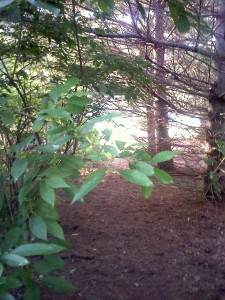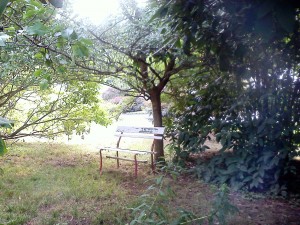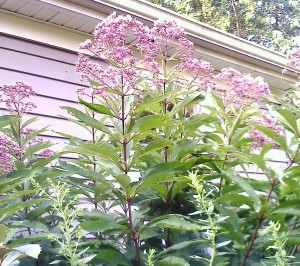Your Colorful Garden: Creating A Sense of Place
Where in nature are you happiest, at peace, smiling? It might be a place from your childhood where you went to hide and play, or it might be a sheltered knoll where you go to meditate. Now, close your eyes for a moment and really think about that place (don’t forget to open your eyes again). 
Chances are your favorite place is a wild place that nature landscaped. Chances are, it is filled with native plants – landscaping and plants that create a personal sense of place.
Now, think about your yard. Do you feel happy there? At peace? Is there a place to go and smile? Does it have a sense of place for you?
Natural Landscaping
Natural landscaping is gaining momentum as a gardening trend. Its goal is to create a sense of place through thoughtful design, incorporating: regionally appropriate plants; people and wildlife friendly ornamentation; living areas and pathways that are easily navigated; and is natural looking. This trend is not new. It has its roots in the early 20th century. What is new is that it incorporates a desire to nourish the earth by: reducing the  use of chemicals, reducing demand on precious water resources, and increasing flora and fauna diversity.
use of chemicals, reducing demand on precious water resources, and increasing flora and fauna diversity.
Regionally appropriate plants are typically native to the region of the garden. They are plants that fit into the garden’s natural light, soil and moisture attributes. This is opposed to trying to change the garden to fit the needs of the plant. They are plants that are more likely to thrive in the long term and they are plants that have been associated with and adapted to the local wildlife through the ages. The leaves, nectar, pollen, fruit and seeds of regionally appropriate plants provide optimal nutrition to our native and transitory birds, butterflies, insects and other animals.
That may sound silly to you; why should you care? Well, think back to your special place.
- What sounds did you hear? Bird song? Buzzing bees?

- What smells were there? Flowers? Dirt?
- What sights were there? Earthworms wriggling? Praying Mantis’ waiting?
All these things, together with the plants, contributed to creating your special place. By bringing these things to your garden, you can reawaken the earth and yourself.
Transforming Your Garden
So, how do you begin this process of creating a sense of place in your garden? Start small. Identify an area of your yard that feels like it has potential. Take a chair out there and sit in it for awhile. Look around, smell the air, listen and think about what would make it truly special. Maybe it is perfect for a wood chip path with a natural grape arbor overhead and a small fountain burbling next to a bench. Or maybe it needs a hammock under a maple tree surrounded by a meadow filled with native grasses and flowers.
Next, draw a sketch to take to the nursery with you. Then, use the native substitution chart below to select some plants. Buy them, lug them and then install them. Finally go and get a chair and sit in your spot to listen, to smell, to watch – enjoy your place and smile.
Ornamental Plants & Native Substitutes
Alien Species Native Substitutes
|
Grasses |
Native Grasses |
|
Miscanthus sisensis (Japanese Silvergrass) |
Andropogon gerardii (Big Bluestem) Sorghustrum nutans (Indian Grass) |
|
Cortaderia sellonana (Pampas Grass) |
Triodia flava (Purple Top) |
|
Tree |
Native Tree |
|
Bradford Pear |
Amelanchier (Serviceberry, Shadblow) |
|
Mimosa |
Eastern Redbud |
|
Paulowinia tomentosa (Princess Tree) |
Franklinia alatamoha Aronia arbutifolia (Chokeberry) Cornus florida |
|
Shrub |
Native Shrub |
|
Ligustrum (Privet) |
Viburnum trilobrum (American Cranberry Bush) |
|
Euonymus alatus (Burning Bush) |
Viburnum dentatum, recognitum, acerfolium |
|
Spirea japonica |
Clethra alnifolia Kalmia (Mountian Laurel) Ilex verticillata (Winterberry Holly) |
|
Hedge Tree |
Native Hedge Tree |
|
Eleangus umbellate (Autumn Olive) |
Phus aromatice (Fragrant Sumac) Rhodendrom plumleaf (Native Azalea) Myrica pennsylvanica (Northern Bayberry) Hamamelis (Witchhazel) |
|
Bedding Plants |
Native Bedding Plants |
|
Numerous |
Eupatorium ‘gateway’ (Joe-Pye Weed) Eupatorium ‘cori’ (Mistflower) Phlox paniculata, divaricata, maculata Tiarella (Foam Flower) Echinacea (Purple Coneflower) Rudbechia (Black Eyed Susan) Monarda (Bee Balm) |